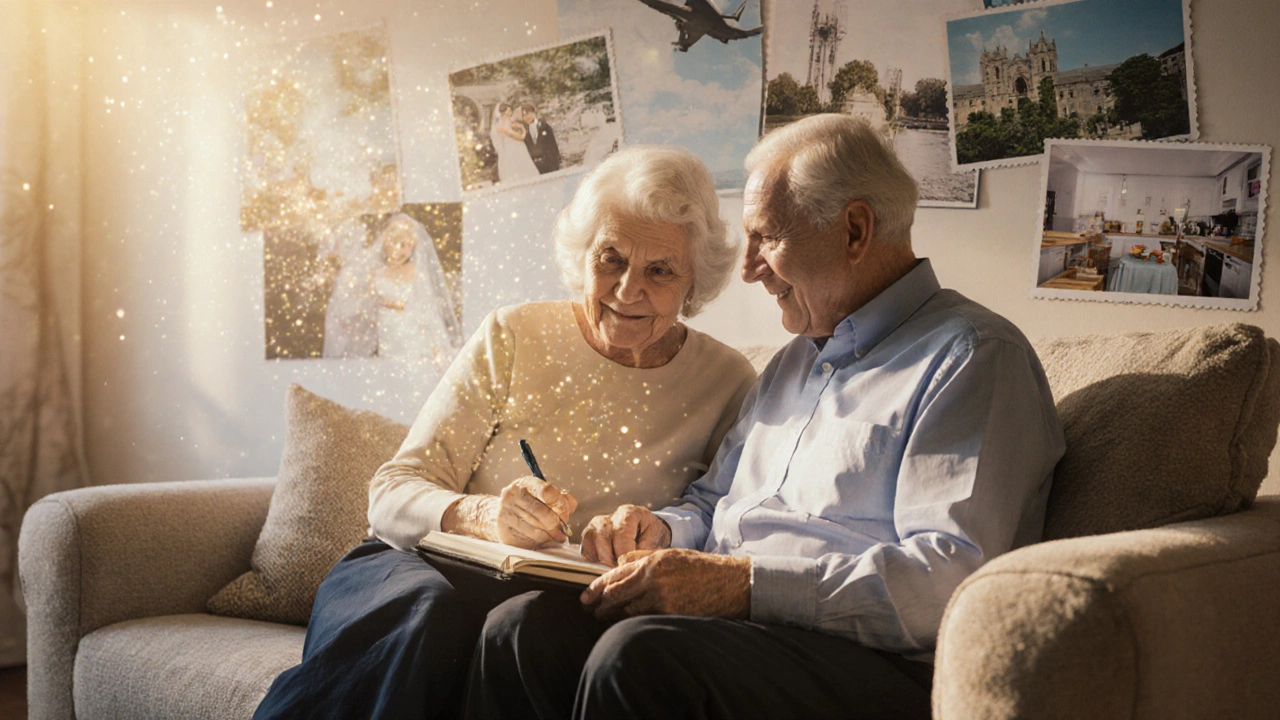Honeymoon Phase Assessment
Are You Still in the Honeymoon Phase?
Check the items below that apply to your relationship. Based on your answers, we'll provide insights about your current relationship dynamics.
Your Results
Ever wonder if some couples really stay in that dreamy honeymoon phase forever? It feels like a myth, yet stories of partners who still feel that first‑date spark pop up everywhere. This article breaks down why the honeymoon glow fades for most, what science says about lasting love, and practical habits that let you keep the magic alive long after the wedding cake is gone.
What Exactly Is the Honeymoon Phase?
Honeymoon Phase is a period in a new romantic relationship, typically lasting from a few months up to two years, where partners experience intense attraction, idealised perceptions of each other, and high levels of emotional and physical intimacy. During this time, your brain releases a cocktail of chemicals-dopamine, norepinephrine, and oxytocin-that amplify pleasure and foster bonding. The result? You feel constantly energized, arguments feel trivial, and every shared moment seems extraordinary.
Why the Glow Usually Fades
Most couples hit a reality checkpoint once the novelty wears off. The brain’s dopamine surge normalises, and the partner’s flaws become visible. This shift is called the "transition to companionate love," where affection steadies into deeper, more secure attachment.
- Neurochemical adaptation: The brain reduces dopamine receptors after prolonged exposure.
- Increased familiarity: Predictable routines lower the excitement factor.
- External stressors: Work, finances, and family responsibilities demand mental bandwidth.
These factors don’t mean the relationship is doomed; they simply signal a move from passionate love to a more durable, partnership‑focused love.
Science‑Backed Factors That Keep the Spark Alive
Research in Attachment Theory shows that securely attached partners are more likely to maintain high relationship satisfaction over decades. Secure attachment fosters trust, reducing the fear of losing the "spark" because each partner feels safe exploring new experiences together.
Another hormone, oxytocin-often called the "cuddle hormone"-plays a crucial role. Regular physical affection, even simple hand‑holds, keeps oxytocin levels elevated, reinforcing emotional intimacy.
Couples who actively practice each other's Love Languages (words of affirmation, quality time, acts of service, gifts, or physical touch) report higher passion scores. Tailoring affection to match your partner’s preferred language creates a feedback loop of feeling valued and desired.

Practical Habits That Extend the Honeymoon Feeling
- Schedule novelty. Try a new hobby, travel to an unfamiliar city, or take a cooking class together every few months. Novel experiences trigger dopamine, mimicking the original thrill.
- Prioritise intentional communication. Set aside a weekly "relationship check‑in" where each partner shares gratitude, concerns, and desires without interruption.
- Practice conflict resolution skills. Use "I" statements, focus on the issue not the person, and aim for collaborative solutions. Effective conflict management prevents resentment from eroding the honeymoon glow.
- Invest in physical intimacy. Regular affection-cuddling, kissing, or sex-boosts oxytocin, reinforcing emotional closeness.
- Show appreciation in love languages. If your partner thrives on acts of service, surprise them with breakfast in bed. If they value words of affirmation, leave heartfelt notes.
These habits are not one‑time fixes; they require consistency, much like any fitness routine.
Common Myths About the Honeymoon Phase
Myth 1: *If you’re still excited, the relationship is superficial.* Reality: Ongoing excitement often reflects a willingness to grow together, not a lack of depth.
Myth 2: *Passionate love must fade.
Reality: While neurochemical peaks level off, couples can deliberately reignite passion through novelty and intentional intimacy.
Myth 3: *Only "perfect" couples stay in the honeymoon phase.* Reality: Even high‑functioning couples face challenges; their resilience lies in how they navigate them.
Real‑World Examples
Take Maya and Liam, married for 15 years. They credit a monthly "adventure night"-anything from escape rooms to midnight drives-for keeping their relationship feeling fresh. Their secret? They treat each outing as a mini‑first‑date, complete with dressing up and planning surprises.
Another pair, Aisha and Raj, use a shared journal to record compliments and hopes. Reviewing past entries reminds them of the early admiration that sparked their bond, reinforcing positive feelings during tough times.

Checklist: Are You Still in the Honeymoon Phase?
- Do you feel a surge of excitement when thinking about your partner?
- Are you comfortable sharing vulnerabilities without fear of judgment?
- Do you regularly engage in new activities together?
- Is physical affection a daily habit?
- Do you resolve disagreements constructively?
If you answered "yes" to most of these, you’re likely sustaining many honeymoon‑phase qualities, even if the label has shifted.
Comparison Table: Typical Relationship vs. Couples Who Extend the Honeymoon Phase
| Indicator | Typical Relationship (Post‑Honeymoon) | Extended Honeymoon Couples |
|---|---|---|
| Frequency of novel experiences | Occasional (once a year) | Regular (every 2-3 months) |
| Physical affection | Routine, less spontaneous | Daily intentional touch |
| Conflict resolution style | Avoidance or escalation | Collaborative "I" statements |
| Oxytocin‑boosting activities | Infrequent | Consistent cuddling, eye‑contact |
| Overall relationship satisfaction (scale 1‑10) | 6‑8 | 8‑10 |
Next Steps: Building Your Forever Honeymoon
Start small. Pick one habit from the list above and implement it for a month. Track changes in how you feel using a simple journal. If the habit brings a noticeable lift, make it a staple. Over time, layer additional practices-novelty dates, love‑language gestures, and conflict‑skill workshops-to create a robust system that keeps the early‑relationship spark thriving.
Can chemistry alone sustain the honeymoon phase?
Chemistry provides the initial boost, but lasting passion requires intentional actions, communication, and shared novelty. Without effort, chemistry alone fades as the brain adapts.
How often should couples try new activities?
Aim for at least once every two to three months. Frequency depends on schedules, but regular novelty keeps dopamine levels elevated.
What role does couples therapy play in maintaining the honeymoon feeling?
Therapy equips partners with tools for effective communication and conflict resolution, which are critical for preserving intimacy and preventing resentment that can dull the honeymoon glow.
Is it realistic to expect the honeymoon phase to last forever?
While the exact neurochemical surge may not remain constant, couples can recreate its essence through ongoing novelty, affection, and secure attachment, effectively feeling like the honeymoon phase persists.
How do love languages influence long‑term passion?
When partners speak each other's primary love language, they feel seen and cherished, which sustains emotional intimacy and keeps the relationship exciting.
